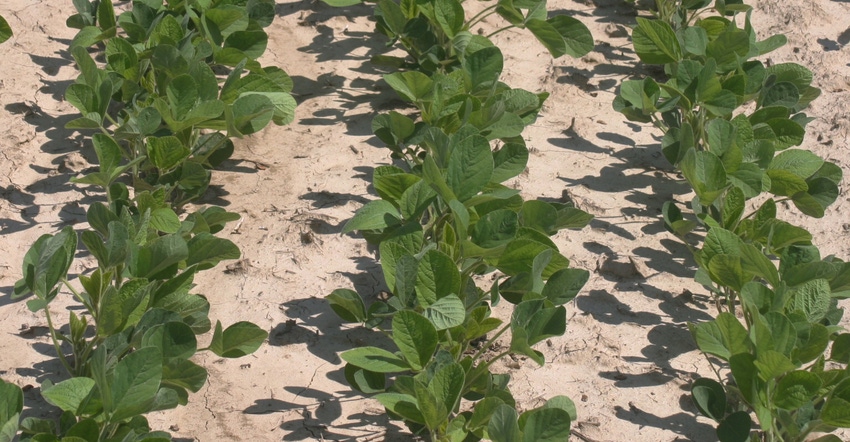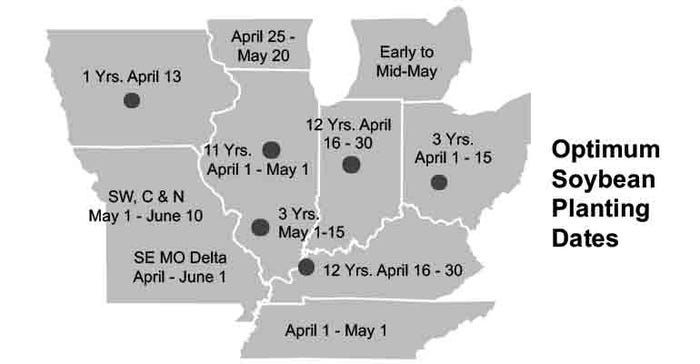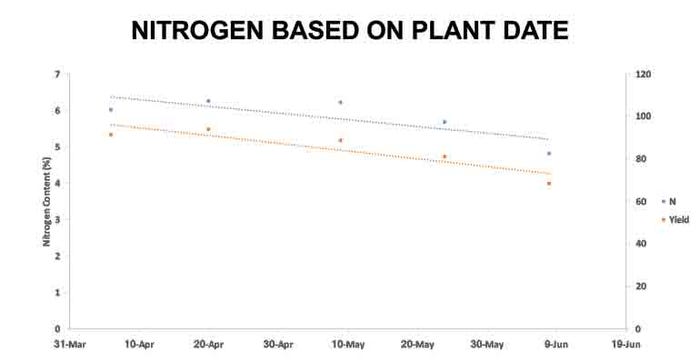March 1, 2017

Sponsored Content
Have you ever considered planting your soybeans at the same time as your corn? What about before your corn? Most farmers don’t consider these options because it costs more to put out an acre of corn than it does soybeans, and the risk with corn is always higher, so we always like to get it in the ground first.
Each year, Beck’s Practical Farm Research (PFR)® team conducts a planting date study in both corn and soybeans to determine what the optimal window for planting is. The data has consistently shown that the optimum planting date window for soybeans is from late April to early May, as shown below.

Several general trends can be noted from this data. One of the most important to note is that at the majority of Beck’s PFR sites, the optimum planting date for soybeans is the same or earlier than that of corn.
PFR Location | Corn Optimum Planting Window | Years of Data | Soybean Optimum Planting Window | Years of Data |
OH | April 16 to April 30 | 4 | April 1 to April 15 | 3 |
IN | April 16 to April 30 | 16 | April 16 to April 30 | 12 |
CIL | April 16 to April 30 | 12 | April 1 to April 30 | 11 |
SIL | April 1to April 15 | 3 | May 1 to April 15 | 3 |
IA | April 13 | 1 | April 13 | 1 |
KY | April 16 to April 30 | 12 | April 16 to April 30 | 12 |
Considering this research, a recommended best practice would be to plant soybeans immediately after planting corn. Or, if your farming operation has the ability, plant both corn and soybeans at the same time as this data proves it’s going to put money in your pocket. Planting soybeans earlier in the season can result in earlier canopy coverage which leads to cooler soil temperatures throughout the season. In Ohio for instance, on a given day in July, a 7 to 14°F difference in soil temperature could be observed when comparing the earliest and latest planting dates. These temperatures were taken within the canopy cover to further demonstrate how critical early canopy coverage is to maintaining soil temperature.
With nodules performing optimally at 72°F, cooler soil temperatures provide an agronomic advantage. More efficient nodules can supply a greater amount of nitrogen (N) which is critical as soybeans require 5 lb. of N to produce each bushel. The graph below demonstrates how closely yield and N availability align based on planting date. The earlier planting dates led to greater N content in the tissue and, as a result, greater yields.

In economic times such as these, when soybeans are $10 and corn is $3.50, planting early can make a huge difference in your net return. This research not only illustrates that the optimum planting date for soybeans continues to trend earlier, but also that significant losses can occur when planting soybeans just one month later than the optimum planting window.
In summary, early planting PAYS.
For regional data on this study, check out the below links to Beck’s 2016 Practical Farm Research Book.
2016 Southern Illinois Results
http://www.beckshybrids.com/Portals/0/SiteContent/Research/Practical%20Farm%20Research/2016%20PFR%20Book/files/247.html
Consult your trusted advisor to determine what planting date is right for your operation.
Practical Farm Research (PFR)® is a registered trademark of Beck’s Superior Hybrids, Inc.
About the Author(s)
You May Also Like




